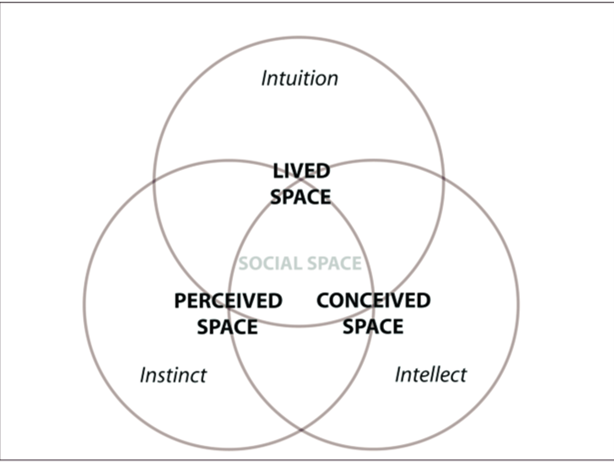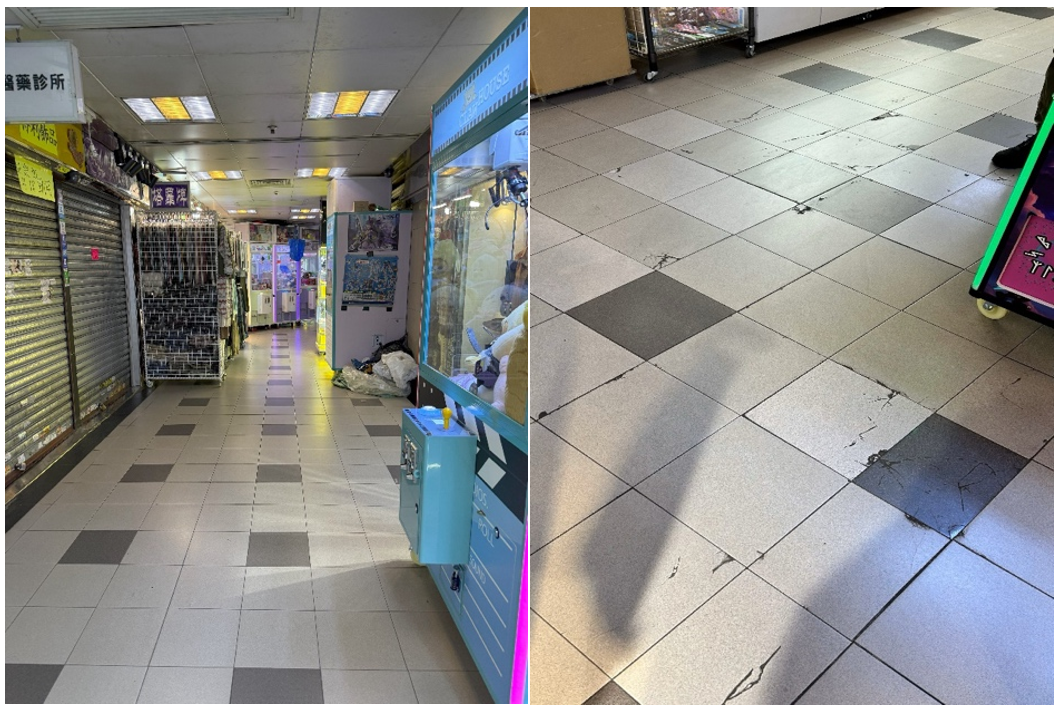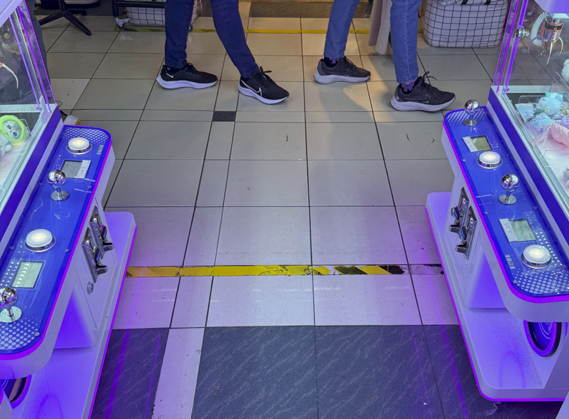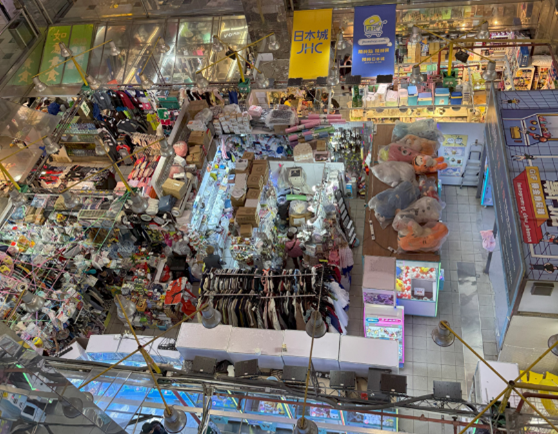1. Introduction
In this
consumerism and metropolitan city, Kwai Chung Plaza stands out among other shopping
malls, with its simple and irreplaceable
aesthetics. This
30-year-old shopping mall attracts numerous teenagers every weekend with its
“young and trendy” vibe and shops. The traces left by the people along the years have shaped the place beyond a mere
mall, it has become an iconic symbol of the
district for community gathering,
leisure and dining.
In this
project, we are going to investigate why Kwai Chung Plaza had become a place for people who embrace old-fashionedness, and the
traces that
have been left by the related stakeholders
to the mall.
Using Henri Lefebvre’s theory of spatial triad, we can better understand the social space and its cultural meaning to the people of Kwai Chung Plaza.
2. Cultural Geographical Perspective in Use
By definition, Cultural Geography studies the relationship between culture and space and how cultural activities manifest in different forms in specific contexts (Crang, 2013), such as cultural value, practice, how people make sense of places and build an understanding of places (Human Geography, 2024). Also, the relationship between culture, space and place is important in cultural geography whether space is abstract, homogeneous, and timeless, but the place is opposite with it. To transform space into place, culture acts as a medium by giving people a concrete understanding of abstract space.
Lefrebvre’s (1991) theory of “Production of Space” contends that space is a product and means of production consisting of perceived space, conceived space and lived space (Lefrebvre, 1991). Perceived space somewhere containing social production and reproduction of cities and daily lives (Lefrebvre, 1991), such as history and human population activities of a specific place. While conceived place is conceptualized spaces governed by the knowledge and ideologies of scientists, planners, social engineers and related professionals (Lefrebvre, 1991), such as different governmental blueprints and reconstruction plans. Lastly, the lived space is the living space for residents and users, which is the combination of prior two spaces, collateral with strong emotional representation. Hence, social space is produced by the intersection of three spaces (Lefrebvre, 1991). Therefore, we adopt this theory, which is consistent with the cultural geography perspective we aim to draw upon, as an analytical framework to illustrate how the above concepts illuminate our empirical analysis.

Figure 1. Henri Lefebvre's triad of space production. (Source: Wiedmann & Salama, 2012)
3. Empirical Analysis
The Perceived Space
Kwai Chung Plaza, inaugurated in 1990, had more than 600 shops inside the building. However, due to high rent, there were not many stores and customer traffic. Over the next few years, some owners divided their stores into multiple stores to gain access to higher rental opportunities. Until now, there are more than 1000 small shops inside Kwai Chung Plaza (Chen, 2016). Inside Kwai Chung Plaza, at first glance, the decoration is stale compared to nearby shopping malls: the floor tiles are black and white, and the headroom of each floor is low.

Figure 2a and 2b. the interior of Kwai Chung Plaza
As figure shows, some stores decorate with nylon lights. There are multiple types of stores inside Kwai Chung Plaza, such as food, books, clothes, and even jade shops, it provides most of the basic needs for the community. Because of the comprehensive nature of Kwai Chung Plaza, it has become the core of the community and provided a platform for people to communicate and interact. For example, some couples come to Kwai Chung Plaza for dates, and some families come for parent-children’s activities.
Wandering in Kwai Chung Plaza, visitors can feel the vibrant and bustling environment, where bargaining voices perfuse the environment. The aisle is very crowded because every shop is packed tightly, and some shops put their goods on the aisle exceeding the yellow line boundary encircling their shop.
To sum up, the interior atmosphere of Kwai Chung Plaza is enhanced by a diverse array of shops, food stalls, odour of many cuisines, and sounds of conversation; the mix of those elements evokes the feeling of a street-like ambiance.

Figure 3. The yellow line of the shop

Figure 4. The ground floor of Kwai Chung Plaza
The Conceived Space
Kwai Chung Plaza was the first mall in the district of Kwai Chung, one of Hong Kong’s traditional industrial hubs where busy container terminals, factory buildings, and large-scale public housing complexes encompass the mall.
Unlike most malls in Hong Kong, Kwai Chung Plaza was not developed by large scale property developers, such as Sun Hung Kai or New World Development. Kwai Chung Plaza’s management system differs a lot. Unlike most real estate developers, who only withhold the “rent and do not sell” policy, its developer Nan Fung Group sold all the shops to the public when the mall was built in 1990. As Kwai Chung Plaza’s ownership was then fragmented into several hundred pieces, representatives from both residential and retail mall owners currently oversee the plaza on behalf of the store owners. When leasing out property, as long as individual property owners receive rents, they generally don’t consider tenant’s brand and type nor will they communicate with other owners about it, leading to the extreme disorganization of store arrangement, forming one of the plaza’s unique sceneries.
In most higher-end malls, the central management team generally sets decorations specifications for tenants to ensure they align with the mall’s luxurious style and they are required to update their decorations collaterally with the mall. Nevertheless, the fragmentation of ownership in Kwai Chung Plaza has made coordinated renovation and modification impossible, meanwhile most older malls have already been refurbished by today’s standards, Kwai Chung Plaza still retained its primitive appearance in the 1990s.
To locals, visiting the plaza is like travelling back in time for the old memories. Thanks to its unique ownership history, the uniqueness in store arrangement and decoration, Kwai Chung Plaza will always remain a great icon of the district.
Lived space
Overall, the features in Kwai Chung Plaza are multifarious and display a fine blend of old and new in perceived space. The reason behind this can be traced to the negotiations between different stakeholders: customers, retailers, and the management.
As mentioned in conceived space, the policy from developer and strata title ownership has created a unique commercial environment inside the plaza. Tenants received fewer restrictions on their business. These factors encourage the multifunctional mall to fulfill the desires of customers of all ages in the Kwai Chung Plaza, fostering long-lasting relationships between tenants and customers. These experiences contribute to collective memories to the perception of customers which attract them to patronize the time-honored brand within the lived space.
Meanwhile, young inexperienced entrepreneurs are attracted to start their businesses within the plaza. The large customers flow from the plaza facilitates them to startup their business. Indeed, young entrepreneurs are rejected by the high threshold of capital in modern shopping malls. The old plaza acts as the stepping stone for them to chase their dreams.
For them, Kwai Chung Plaza is a place for trial-and-error. Newer forms of businesses slip into the mall easily bringing in many up-to-date merchandise and services to the mall. People from different cultural backgrounds inadvertently leave cultural marks, promote the values embedded in their businesses to wider audiences outside of their local context. Different powers, new and old, transgressed, resisted and incorporated against each other, ever-changing the cultural landscape that are left behind.
The young entrepreneurs generate new traces with passion and vigour, which fuse with the old traces to form a new, unprecedented culture. The process of integration may create conflicts due to discrepancies of values. Over time, these two cultures inevitably amalgamate and merge with one another.
4. Conclusion
In conclusion, using the theory of spatial triad, we can understand the cultural characteristics inside Kwai Chung Plaza. The dynamics of traces shape the uniqueness of shopping culture in district Kwai Chung. The old traces bring collective memories, and the influx of new traces brings energy to the district. The utilization of both traces creates a landmark, showing the diversity of culture.
It is difficult for the young to fully integrate into this society due to various constraints like limited cultural endorsement from society. Nevertheless, Kwai Chung Plaza provides opportunities, allowing them to exhibit their personal values and cultures. The fusion of traces in this plaza is an example of showcasing the cultural diversity of Hong Kong.
References
Chen, Q. E. (2016). zai
lian suo fu zhi de shang chang zhong hai you yi zuo cheng zai zhe「xiang gang ben tu」 [In chain-copied shopping
malls, There is also a building that carries "Hong Kong Mainland"]. Initium
Media
Crang, M. (2013). Cultural geography. Routledge.
Human Geography (2024). Dartmouth Libraries. https://researchguides.dartmouth.edu/human_geography/main
Lefebvre, H. (2012). From the production of space. In Theatre
and performance design (pp. 81-84). Routledge.
Wiedmann, F., & Salama, A. M. (2012, December). The role
of architecture in producing urban qualities for sustainability: Implications
for the future of architectural education. In Malaysian Architectural
Education Conference (MAEC 2012) (pp. 20-26).
在連鎖複製的商場中,還有一座承載着「香港本土」 | 端傳媒
Initium Media.


